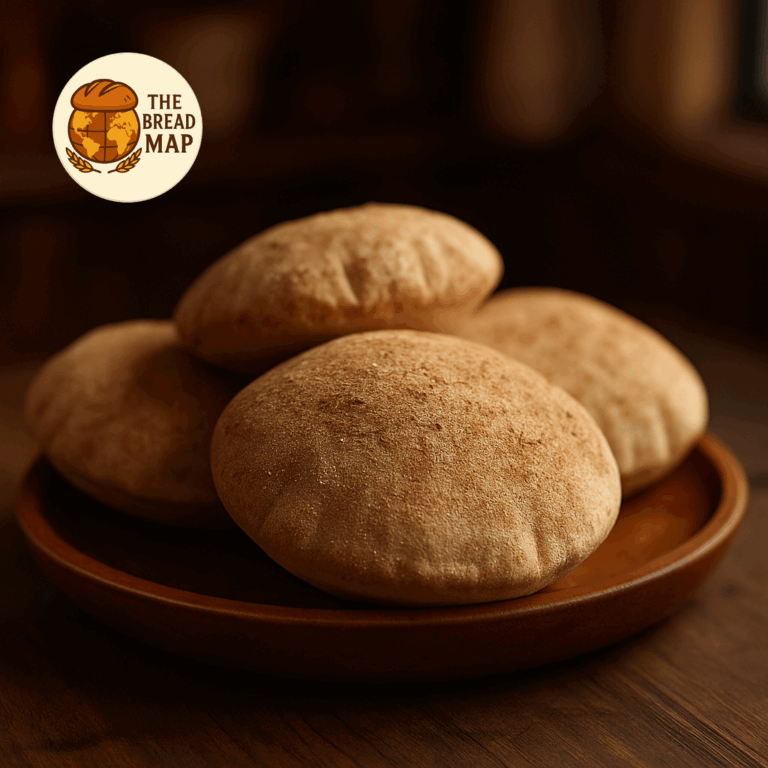
Eish Baladi, meaning “local bread,” isn’t just a beloved staple in Egyptian households—it’s a symbol of heritage, survival, and the shared table. This humble whole wheat flatbread is everywhere in Egypt: stacked high in open markets, tucked warm into napkins at kitchen tables, or handed out fresh from village ovens. With its slight tang from natural fermentation and characteristic balloon-like puff when baked, Eish Baladi is truly the bread of the people.
Historical Background
Eish Baladi traces its roots back over 5,000 years to ancient Egypt, where tomb paintings depict scenes of flatbread preparation and communal baking. The name itself carries powerful connotations: “eish” doesn’t just mean bread, it means life in Arabic—a reflection of the food’s essential role in daily sustenance. Over centuries, this bread has adapted but never strayed far from its traditional makeup—proof of its enduring genius. Egyptians have long viewed bread as a sacred part of life, embedding it into religious rituals, communal meals, and even social justice movements.
Region of Origin
While Eish Baladi is widespread throughout Egypt, its most iconic version is found in Cairo and the surrounding Nile Delta, where the fertile soil produces the hearty wheat key to its recipe. In rural areas, women still knead it by hand and bake it in communal ovens—practices that not only preserve tradition but continue to feed the soul of Egypt’s culinary identity.
Ingredients and Preparation
Eish Baladi is formally similar to pita, but its use of whole wheat flour gives it a darker color and nutty aroma. The simplicity of its ingredients belies the depth of labor and care involved in its preparation.
- Whole wheat flour
- Water
- Salt
- Natural leavening (such as sourdough or yeast starter)
Prepared by mixing, kneading, resting, and gently rolling into disks, Eish Baladi is traditionally baked in super-hot ovens or on a blazing metal surface. The intense heat creates steam inside the dough, making it puff dramatically—resulting in its signature pocketed form. This feature is not just delightful but practical, perfect for stuffing or scooping foods like ful medames (stewed fava beans), ta’ameya (Egyptian falafel), or smoky baba ghanoush.
Cultural Importance
Eish Baladi is more than bread—it’s a mirror of Egyptian resilience and hospitality. It famously played a role during Egypt’s bread protests in the 1970s, when the government tried to cut subsidies, and people rightfully rose to defend their most basic sustenance. It is customarily shared at every meal, offered to guests as a gesture of welcome, and even used as currency in bartering within tight-knit farming communities. Today, its production still supports small village economies, and many families uphold the tradition of home baking despite the rise of mass production.
Whether dipped, stuffed, torn, or toasted, Eish Baladi connects generations over a shared taste of history. It’s a bread that tells a story—not just of Egypt’s past, but of a people’s enduring relationship with the land, the table, and one another.
Leave a Reply